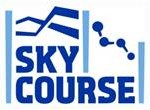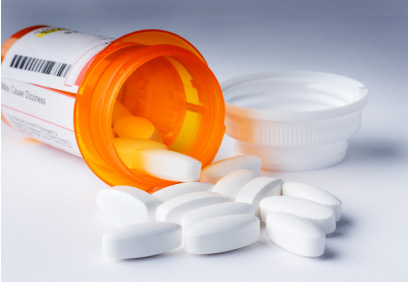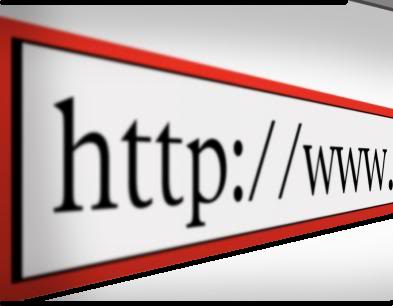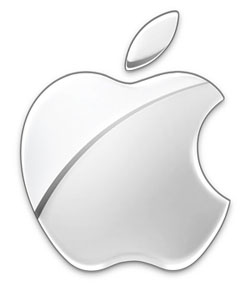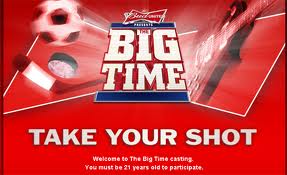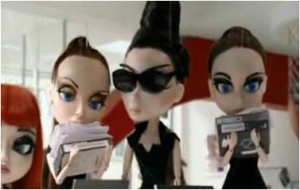11 Most Asked Pharmaceutical Branding Questions Answered
Whether you've been involved in pharmaceutical branding for years or you're new to the game sometimes the answers to the most commonly asked questions can escape you. We've we've compiled answers for the 11 most frequently asked questions surrounding pharmaceutical branding we receive today to help you with your next branding project:
Right-of-the-Dot Domains - What's it Worth to Your Brand?
No doubt anyone reading this blog is aware that nearly all websites (excluding institutions such as universities and government agencies) end in ".com." But, what you may not know is that in the coming weeks website names will change. The Internet Corporation for Assigned Names and Numbers ICANN – a non-profit for assigning domain names and IP addresses - announced it would create hundreds of new names for category domains that would include both generic spaces (i.e. ".beaches") and brand specific spaces (i.e. ".microsoft"). Technically named gTLD (generic top level domains) these new vanity domains can be more easily understood as "right of the dot domain."
There is going to be a lot of conversation and questions surrounding this move by ICANN in the coming weeks due to the potential headaches brands and companies will face in deciding if and how they will approach this new branding opportunity.
To give you an idea of how this announcement may potentially affect companies and brands we've listed out the Pros and Cons of the new "right of the dot domain" era.
Pros:
- More Controlled Brand Building on the Internet –With company and brand specific domains companies will have the opportunity to build a larger brand presence on the internet through these brand domains. As long as a company can prove they own the trademark to a name they will be granted the domain.
- Generic Domain Names are Fair Game - This could be highly beneficial for the lucky companies that snag these generic domains as they would then control all of content posted at those generic domains. For example, if Nike won the rights to host the domain ".sports" they would control any and all information at ".sports" putting them in a position to be the reigning authority to anything sports related
- Greater Brand Control - Similar to the point above, registering ."yourcompany" will give you control over anything at that domain – virtually eliminating all potential fraud or negative brand images.
Cons:
- Small Application Window – there will only be a 60 day open window for applications – after that it may be another 4-5 years before applications are accepted again
- One Brand Could Monopolize on Generic Spaces – though it can (and will be) viewed as pro for the few that can get the generic domain spaces like ".sports," for those who miss out will now potentially have their competitors controlling all content at such sites, which in turn may turn them in the industry thought leaders on a particular subject.
- A Brand has Hundreds of Brands Under their Umbrella – Some companies, such as Proctor & Gamble, own hundreds of brands; which brings the question where does such a company draw the gTLD line? Does P&G buy a domain for every product, or none at all? Securing gTLD's will not come cheap. So, how much is it worth to a company to have vanity domains for each of their brands? How much control do they really need/want on the Internet?
- A New Townhome or New Domain Name? - Filing cost is $185,000 per domain and an additional $25,000 in annual domain fees.
- The Application Closely Resembles a Short Novel – The ICANN application is a 150 page document that will be published in mid-June. After it is published there will only be a short time window to submit it.
The ".com" that we have all become accustomed to will more than likely continue to be the norm on the Internet, but it will be interesting to see how companies and brands use the new right-of-the-dot vanity URL to help build their brand's online presence.
Happy Birthday Apple Stores!
A lot has changed since 2001. Back in yesteryear Mark Zuckerberg was not a household name, the word tweeting was the sound a bird made, and as of May 2001 Apple had yet to open any retail stores – the catalyst that helped Apple become the brand that it is today.
Today marks the 10th anniversary of Apple opening their first retail store in Tysons Corner, VA, a Washington, DC suburb. At the time many in the retail industry saw the move as risky, because "big box" technology stores had a stronghold on technology sales. Apple broke away from the norm with their stores by exclusively selling Apple products, instead of selling them alongside their competitors.
No doubt much of Apple's success has come from their innovative and industry changing products, but it is also impossible to ignore the fact that the brand's success has a lot to do with their brand image and seemingly flawless execution of brand standards.
Take a moment to think of each Apple store you've been in. It's hard to decipher which is which, and where each was located isn’t it? You can attribute that to the fact that Apple cuts no corners in controlling their retail environments. Each store has the same look and the same feel, when you step into an Apple store there is no second guessing your location. Isn't that something all brands desire to achieve, an all knowing awareness of their brand?
Whether its architectural design, package design, or product design, Apple uses a consistent brand image to maintain a familiarity amongst consumers, and in a world dominated by ever changing technology Apple's consistent design and image has no doubt helped the brand who was ranked as the world's 49th most valuable brand in 2001 skyrocket to the top of the list and land at #1 in May 2011.
So, Happy 10th Birthday Apple stores, I'm sure you'll have no problem getting friends to come to your birthday party.
Ready for the Big Time?
Is Budweiser flexing its brand muscles because they can or do they recognize the power of their brand to help others realize their dream of making it big?
Regardless of the answer, Budweiser announced this week they are launching a reality TV show, "Bud United Presents: The Big Time." The show's premise (from a non-brand strategy point of view) is to showcase young individuals with a dream (such as becoming a pitcher or racecar driver) being mentored and coached by one of the world's best in their respective area. Budweiser is leveraging their brand relationships with sports leagues, celebrities, etc. to help young adults achieve their dreams.
For Budweiser though this is more than helping individuals reach their dreams, it is an opportunity for one of the top consumer brands to enter unchartered waters by being the first alcohol brand to sponsor a TV show. From a brand strategy standpoint Budweiser's goal is to go beyond traditional product placement, and extend their global brand platform to celebrating and anticipating great times…at the hand of Budweiser.
Budweiser sponsorships include sporting leagues, musical festivals, and even the US Military, spearheading a reality TV is certainly a new sponsorship endeavor for the major brand, and an interesting one at that. If successful, it will show that Budweiser as a brand has the ability and power to extend past their niche and touch a new market, and if successful could be compared to other major brands, like Starbucks, who recently extended past their niche and into music and food.
It is interesting to note that this announcement comes at a time in the beer industry when craft brewery sales have consistently been on the rise over the last couple years, and are slowly chipping away at Budweiser's enormous market share. Which brings me back to the question at the beginning of this post, Is Budweiser flexing its brand muscles to show others that they are still the kings of the industry, or because they recognize the power of their brand to help others realize their dream of making it big?
A Refreshing Taste
Coca-Cola is the most valuable brand in the world, and this month the company is celebrating its 125th birthday. Throughout its history Coca-Cola has extended its brand portfolio many times to include brands such as Coke Zero, Powerade, and Vitamin Water, but it was their original brand extension that has become nearly as strong and recognizable as the original brand itself. Yes, Diet Coke.
In 2011 Diet Coke surpassed Pepsi as the #2 soda in the U.S., and it was right behind, you guessed it, the original Coca-Cola. Having Diet Coke holding the #2 spot is more than a victory for the original Coca-Cola brand, but for the Diet Coke brand as well. It goes to show what most people have known for some time, that Diet Coke is no longer merely a brand extension of Coca-Cola, as it was when it launched in 1982, but a powerful brand on its own.
It was through a strong brand strategy from the start that propelled the brand to be the #3 soft drink in the U.S. by 1984, a spot it held until this year's move up in the ranks. For the majority of the brand's history it has been targeted to woman, originally by spotlighting fashionable woman and good looking men; and more recently by targeting the independent and working woman.
So, just for the fun of it, take a look at some of Diet Coke's most memorable commercials, starting with its very first that aired in 1983:
Congrats to our Design Team!
Cited for excellence in logo and trademark design, five Addison Whitney logos have been honored as winners of the American Graphic Design & Advertising 27 Award.
The innovative design behind the winning logos-Alerian Capital Management, SteelPath, Carnival Cruise Lines' RedFrog Pub and ThirstyFrog Red and BYB Brand's Simmer relaxation drink-captured the eyes and votes of judges, allowing Addison Whitney to add to its growing list of 2011 design awards.
"We are thrilled to be recognized in the American Graphic Design & Advertising 27 Awards for our work with Carnival, Alerian, SteelPath and BYB Brands," said Senior Graphic Designer Nick Irwin. "Each project presented a unique opportunity to develop identities for various companies with an array of attributes. With the collaborative support of both great clients and savvy designers, these projects netted successful results."
American Graphic Design & Advertising presents annual awards to showcase the best graphic design and advertising in the Unites States. Work is judged on concept originality, skills and presentation involved in the execution and how effective the work is.
Here are their award winning logos:
Insperity | What it Means to Their CEO
You may recall the posts in March about the Insperity launch. We did our best to sum up our engagement with the Administaff/ Insperity team, but it is a lot more exciting to hear about the transition directly from Insperity Chairman of the Board and CEO Paul Sarvadi. (He also happens to be one of the founders.) Take a look at the video below.
Carnival’s Magic has set sail on its Inaugural Voyage!!
From creating names to designing logos a number of Addison Whitney brands can be seen onboard the new ship. We had so much fun working with the Carnival team, and we want to continue that fun with a little interoffice competition.
To help us decide which Addison Whitney team member can claim bragging rights around the office check out the AW brands below and “Like” your favorite! And if you want to read more about our work with Carnival click on the logos below.






